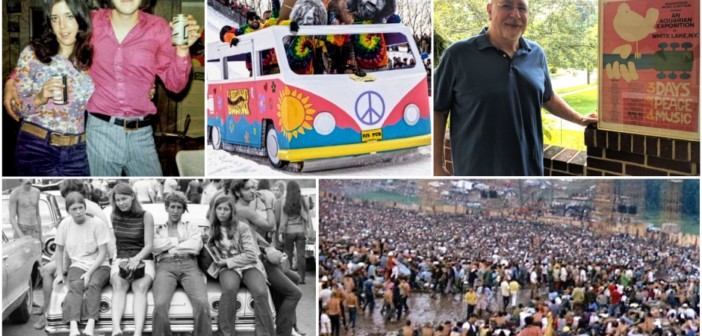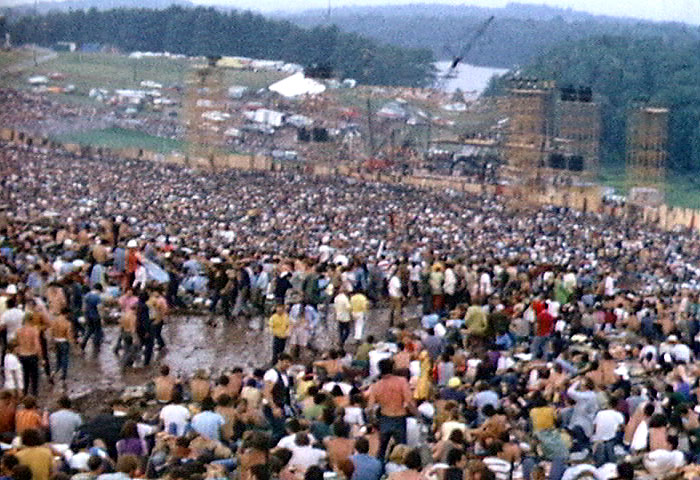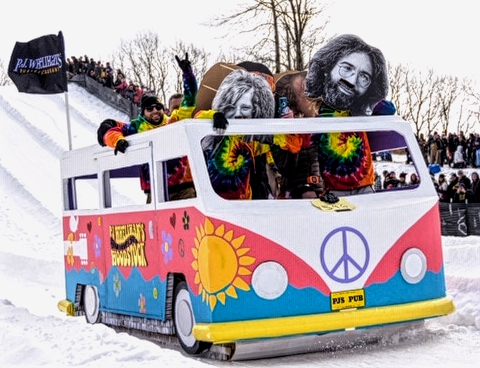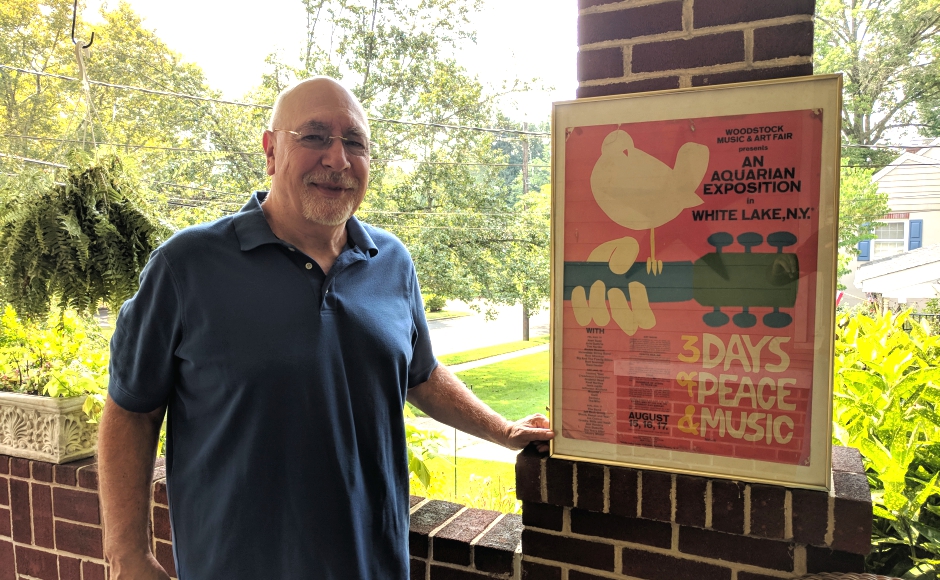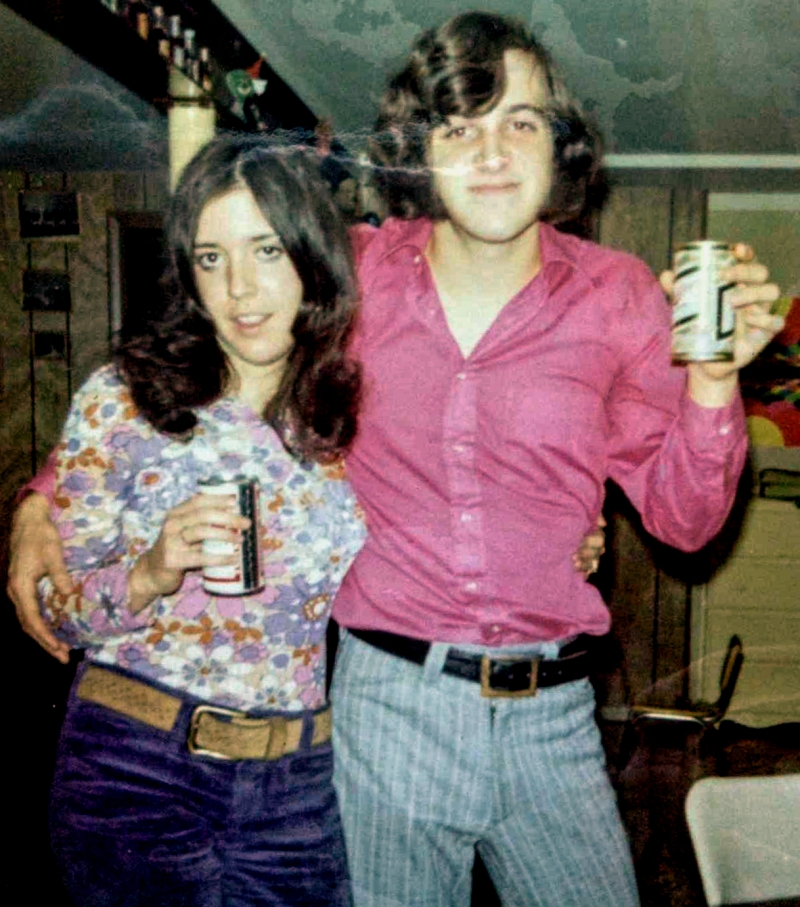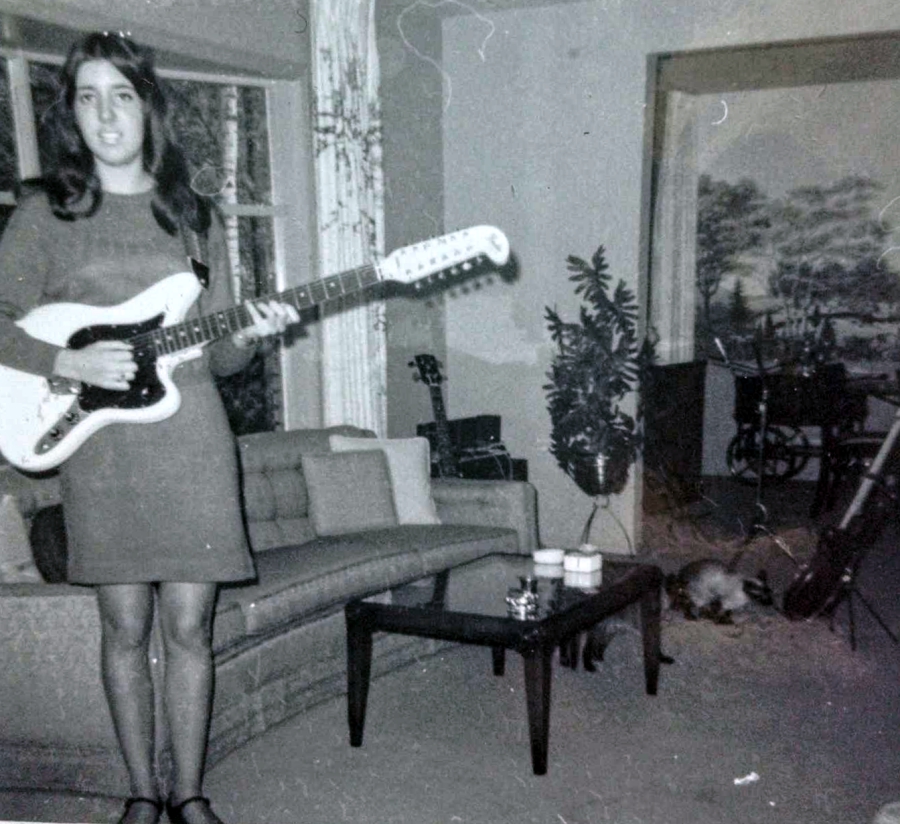On the anniversary of the historic music festival, Haddon Township residents recollect their memories of the event ahead of an all-day street festival August 10.
By Matt Skoufalos | August 9, 2019
By the time we got to Woodstock
We were half a million strong
And everywhere there was song and celebration…
—Joni Mitchell, “Woodstock”
Almost since it ended, an entire generation seems to have spent the intervening 50 years trying to recapture the three days of peace and music promised by the Woodstock Music Festival.
On the thirtieth anniversary of the event, there was the ill-fated encore of Woodstock ’99, a debacle that, in hindsight, perhaps should have anticipated the difficulties in attempting to resurrect a seminal generational happening.
So it might have been less surprising when this year’s organizers, a group led by original Woodstock cofounder Michael Lang, couldn’t overcome logistical hurdles to host a diamond-anniversary repeat concert.
But on Saturday, about a week ahead of the official date, and at a much smaller scale, the Haddon Township Business Improvement District (BID) will do its best to revive the intentions of the original gathering for a few hours along Haddon Avenue.
“We’re trying to capture, at least for one day, the essence of the late sixties and Woodstock,” said BID Chair Mike Perro of the PJW Restaurant Group, while acknowledging that, “like anything with sequels, when you try to capture that magic again, it’s just so hard to do.”
But for this event, which has been in the works since last October, he’s giving it a shot.
Perro was just 10 years old in 1969, a boy who marveled at the Apollo moon landing even as he feared that his older brother would be conscripted into the Vietnam War. Too young to attend Woodstock himself, fifty years after the fact, he’s hoping to bring the next best thing to Haddon Avenue.
The show, which runs from 1 to 10 p.m., features six bands, a streetful of food trucks and artisan vendors, and a beer garden. Activities recalling the original Woodstock have also been scheduled, including a best-dressed hippie contest, a mud pit, a giant Twister game, and a PJW-built cardboard microbus.
The musical acts will seek to recreate some of the song selections of the original Woodstock artists.
In between sets, tributes will be offered to veterans of the Vietnam War, as well as to those missing or killed in action during it.
“It’s hard to do anything from the sixties and Woodstock without paying tribute to the folks who gave their lives or fought in Vietnam,” Perro said.
These acknowledgments are couched in recognition of the same political parallels of his childhood writ large again today, Perro said.
“Some of the causes today are not unlike the causes of 50 years ago, and there’s been varying degrees of success in achieving them,” he said.
“Woodstock kind of brought people together,” Perro said. “Everyone could come together peacefully for a common cause.
“[The festival] wasn’t thought of much at the time, but the more that people learned about it, they realized the young generation could come together, they could have a voice, and it’s something they could take seriously,” he said.
And I dreamed I saw the bombers
Riding shotgun in the sky
And they were turning into butterflies
Above our nation…—Joni Mitchell, “Woodstock”
On August 15, 1969, Bill Reeves and his college friends packed up their car and headed up to Woodstock.
A few weeks away from beginning his junior year at Colgate University, Reeves knew the lay of the land, and was eager to avoid the jam-up on the New York State Thruway.
But even sidewinding through the Port Jervis back roads did nothing to avoid the crawling congestion outside of White Lake, New York.
So Reeves and his friends parked their car in a backyard along the highway, paid the homeowner a few dollars, and through a combination of walking and riding on slowly moving vehicles, made it the remaining six miles to the show.
“By that time, it had become a free concert,” Reeves remembers; “all of the fencing had been trampled over, and we had actually purchased our tickets. But we settled in, and got what we considered to be a reasonable seat on a blanket directly in front of the stage, maybe 200 yards up the hill.”
From that vantage point, the group took in most of the show. Amid the sea of some half-a-million people, Reeves recalls landmark performances from Crosby, Stills, Nash, & Young—only their second show in that lineup—Joe Cocker and the Grease Band, and Santana. He and a friend missed The Who and Jefferson Airplane when they retreated to the car Saturday night to retrieve their food and couldn’t find their friends back at the concert.
“It was pretty sweltering up there,” Reeves said. “The rain felt pretty good when it came on Sunday, but then you were also soaking wet by the end of the night. Food was in short supply. You had to line up to get to the bathroom. If you were claustrophobic, it would’ve been a tough sell for you.
“We stuck it out to the end to hear Jimi Hendrix play The Star-Spangled Banner, and when I got home, I took a shower for two hours,” he said.
Despite the press of humanity and the environmental conditions, Reeves remembers the multitudes as “very friendly and peaceful.
“We were all of the same mind,” he said.
“Most of us were crossing our fingers that we weren’t going to get drafted to Vietnam; that was on everybody’s mind.
“If you listen to the words of Joni Mitchell that she wrote after, everybody wanted ‘to go back to the garden.’ That’s what it was all about,” Reeves said.
Although the concert felt significant at the time, Reeves said it’s only gained importance as the years accumulated. From his Haddon Township home, he recounted how “the civil rights movement, the women’s liberation movement, the antiwar movement… all kind of came together in one event in upstate New York, and we were all fortunate to experience it.
“I’ve been telling this story to people for 50 years, and it’s only now 50 years later that they finally seem interested,” he laughed.
We are stardust
Billion year old carbon
We are golden
Caught in the devil’s bargain
And we’ve got to get ourselves
Back to the garden—Joni Mitchell, “Woodstock”
Shirley Lugowe was a fresh high-school graduate from Wyckoff when “one of the boys I was dating just a little bit said he could get me to see the Woodstock Festival,” she remembers.
But her parents would only allow her to go for one day, Friday, and on the conditions that she returned the same day and took her 15-year-old brother along.
(“And if it had been one of the other boys that I liked much better, they never would have let me go!” Lugowe said.)
Her date had the forethought to bring a wagonload of fried chicken, with which he bartered for water and kept them all moving along the way.
They left their car behind (like everyone else), and hitched a ride on a flatbed truck to the festival grounds.
Although the day was marked by ceaseless rain and Lugowe had to skip out on much of the music, being a part of the moment was “a wonderful experience.
“I liked going to dances, and I liked trying to push the envelope,” she said. “It was really cool to be there and walk around and watch everything that was going on.
“There were no fights. You never felt unsafe in any way. Nobody stole from anybody. It was something I was really glad that I did.”
Her parents never understood the appeal of her music, Lugowe said, but it wasn’t for a lack of perspective. They were professional big-band musicians and lifelong performers who “insisted that when my generation got old that this music was not going to be around, that nobody was going to be listening to the Rolling Stones, that we wouldn’t know how to dance, because none of us knew ballroom dancing,” she said.
Even if history hasn’t borne out that perspective, music has remained an integral part of Lugowe’s life, and continues to be “something that brings generations together,” she said.
On Saturday, she plans to be “out there, enjoying the music” on Haddon Avenue.
“I don’t feel 68 years old; I still feel like I’m 18,” Lugowe said.
“I’ve lived in Haddon Township for 35 years.
“I love this town, and I think the festivals that we have, the restaurants and pubs, that’s bringing young families to town.”
Haddon Township Woodstock Celebration Lineup
- 1 – 2:30 – The Newspaper Taxis
- 2:45 – 4:45 – AM Radio Tribute Band
- 5:15 – 6:15 – John Torres Band
- 6:30 – 7:30 – Al’s Pals
- 7:45 – 8:45 – Smash Palace
- 9 – 10 – Cellarside
Please support NJ Pen with a subscription. Get e-mails, or follow us on Facebook, Twitter, and Instagram.

